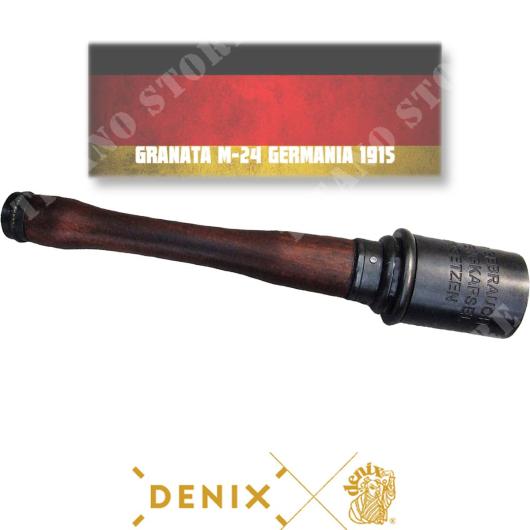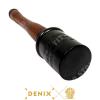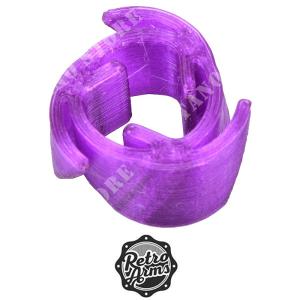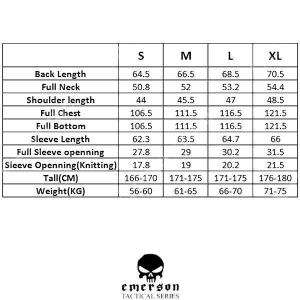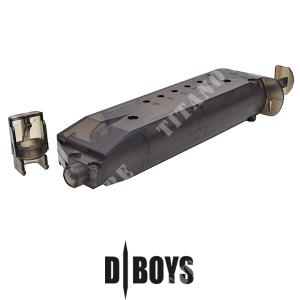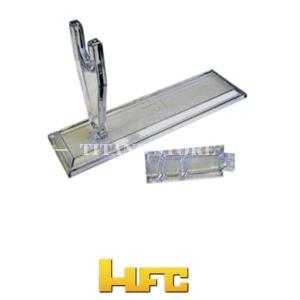REPLICA GRANTA M-24 BLACK 1915 DENIX (0737)
Available
Insert quantity
Fast shipping
Secure Payments
Certified transaction
Original products
Granada M-24 Stielhandgranate, Germany (Used in WWI and WWII).
The mango grenade was introduced in 1915 and the design was developed during the First World War. The detonator was friction. This method was rare in other countries, but widely used in German grenades.
The grenade consisted of a hollow handle with a detonator and an explosive head on one end. Inside the hollow handle, a rope with a porcelain ball was attached to the detonator. The rope was held in place by a removable cap on the base. To use the grenade, the scabbard of the base was unscrewed, allowing the ball and string to fall out. When he pulled the rope, he dragged a steel bar through the detonator, causing it to ignite and start detonation for five seconds.
The first mango grenades exposed their string, which came out of the handle near the bottom (instead of going inside, covered by the detachable scabbard of the base). This caused the ropes to have a tendency to snag and trigger grenades when German soldiers carried them forward, causing severe (and usually fatal) injuries.
Mango grenades were disassembled in wooden crates (later metal) and the assembly of these was done before the fight. Inside the scabbard of its case was the following reminder: "Vor gebrauch sprengkapsel einsetzen", (in Spanish: insert the detonator before use).
Features :
Length: 35cm
Weight: 543g
Black colour
The mango grenade was introduced in 1915 and the design was developed during the First World War. The detonator was friction. This method was rare in other countries, but widely used in German grenades.
The grenade consisted of a hollow handle with a detonator and an explosive head on one end. Inside the hollow handle, a rope with a porcelain ball was attached to the detonator. The rope was held in place by a removable cap on the base. To use the grenade, the scabbard of the base was unscrewed, allowing the ball and string to fall out. When he pulled the rope, he dragged a steel bar through the detonator, causing it to ignite and start detonation for five seconds.
The first mango grenades exposed their string, which came out of the handle near the bottom (instead of going inside, covered by the detachable scabbard of the base). This caused the ropes to have a tendency to snag and trigger grenades when German soldiers carried them forward, causing severe (and usually fatal) injuries.
Mango grenades were disassembled in wooden crates (later metal) and the assembly of these was done before the fight. Inside the scabbard of its case was the following reminder: "Vor gebrauch sprengkapsel einsetzen", (in Spanish: insert the detonator before use).
Features :
Length: 35cm
Weight: 543g
Black colour
No comments entered for:
Similar Products
Similar Products
Similar Products
Similar Products
Similar Products
Similar Products


